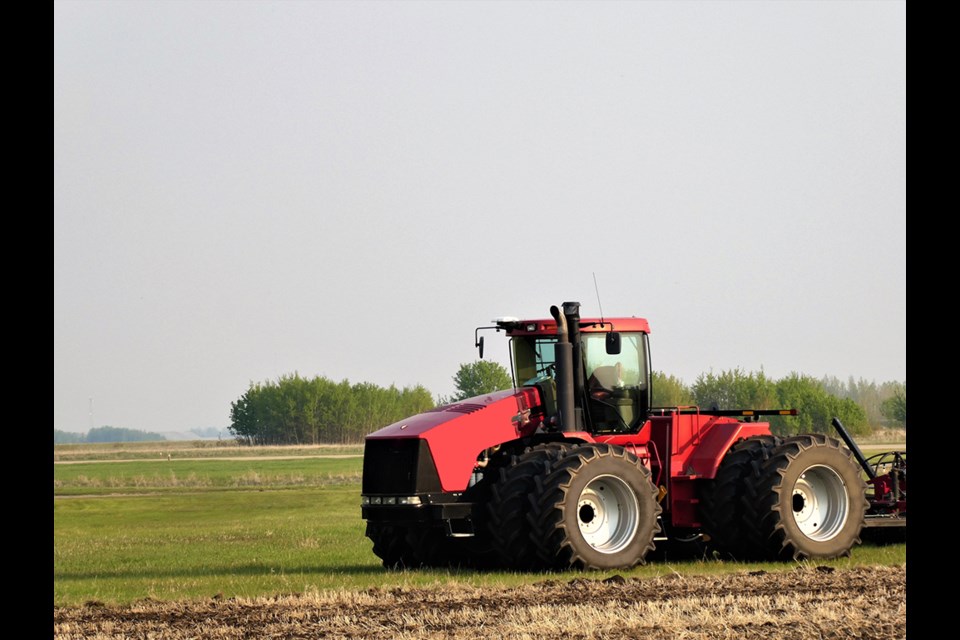WEST-CENTRAL SASKATCHEWAN CROP REGION — Producers in the West-Central Saskatchewan crop region made great progress seeding this week, even with some minor delays due to rainfall events. Fifty-three per cent of the crop is in the ground, ahead of the five-year average (2017-2021) of 42 per cent for this time of year. Dry conditions and lack of rain have allowed producers to complete their seeding operations much faster than normal. Now, many producers are waiting for rain so their crops will germinate and establish evenly.
Eighty-four per cent of the field pea acres, 68 per cent of lentil, 51 per cent of spring wheat, 49 per cent of durum, 42 per cent of canola and 40 per cent of oats have been seeded so far across the region.
Rain was finally received in the region and producers were happy to see some much-needed moisture fall on their fields. The Eyebrow area received 35 mm, the Hanley area 23 mm, the Outlook area 17 mm the Kindersley area 15 mm and the Marengo area four mm. Wind also swept across the region and halted spraying operations and dried out topsoil where no rain was received.
Moisture is very sparse in the region and more general rain showers are needed to improve conditions. Cropland topsoil moisture is rated as 27 per cent adequate, 37 per cent short and 36 per cent very short. Hay land and pasture topsoil moisture is rated as 32 per cent adequate, 30 per cent short and 38 per cent very short.
Provincial overview: Moisture levels improved
Large amounts of rainfall are generally improving topsoil moisture and pasture conditions in the province, while also delaying seeding, particularly in the eastern half of the province. Producers who have been able to get in the field are making good progress, with 33 per cent of the 2022 crop now in the ground. As this is behind the five-year average (2017-2021) of 53 per cent, producers are hoping for some warm days to allow field work to advance.
Sixty per cent of the crop has been seeded in the southwest region, 53 per cent in the west central, 35 per cent in the northwest, 17 per cent in the southeast, 13 per cent in the east central and eight per cent in the northeast. Fifty-nine per cent of lentils, 57 per cent of field peas, 51 per cent of durum, 29 per cent of spring wheat and 27 per cent of barley have been seeded to date. Barley, peas and lentils have begun sprouting throughout the southwest and west central regions.
A significant weather system moved across the province in the latter half of the week, bringing lots of rainfall in some areas. The Estevan area reported more than 120 mm over two days, the Weyburn area 92 mm, the Big Beaver area 87 mm, the Moosomin area 75 mm and the Eyebrow area 35 mm. Many parts of the southwest, west central and northwest did not receive significant amounts rainfall and rain would be appreciated once seeding concludes.
With almost weekly rainfall events, topsoil moisture conditions continue to improve for the province. Cropland topsoil moisture is rated as 12 per cent surplus, 56 per cent adequate, 20 per cent short and 12 per cent very short. Hay and pastureland topsoil moisture is rated as four per cent surplus, 56 per cent adequate, 24 per cent short and 16 per cent very short. Pasturelands that have received moisture all spring are beginning to see good recovery from the 2021 drought and their carrying capacity of cattle is increasing.


